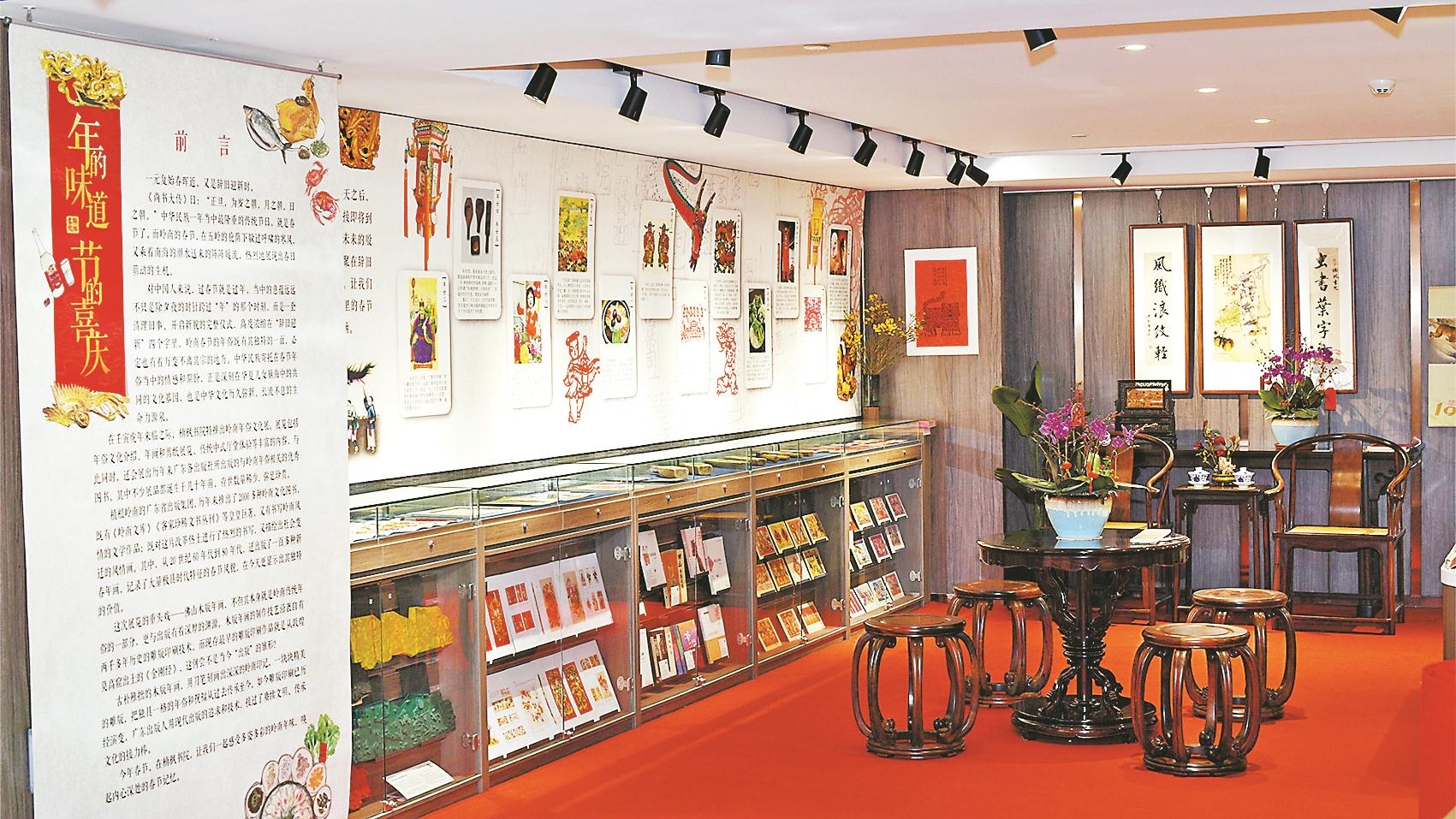
New Year Customs Exhibition Scene
Text/Yangcheng Evening News All-Media Reporter Sun Lei Komiks 1960 witch cloth drawCinema 1950 witch cloth drawComponent Wu Qidong Wang Liang
Photo/Ratty Li Yuanqing
What do you think of when it comes to Guangdong New Year Customs? Some customs such as walking in the flower street and washing the sloppy clothes, and they are still prosperous; some customs such as worshiping the Kitchen God on the 23rd day of the lunar calendar and worshiping the God of Wealth on the 2nd day of the lunar calendar, which were once an indispensable part of the Spring Festival in Lingnan, but they are gradually fading away with the development of the times.
Recently, Southern Media and Nanfeng Academy held a special exhibition on Lingnan New Year Customs, including not only Buddha woodblock New Year paintings and Guangdong paper-cut national intangible cultural heritage projects, but also Lingnan New Year customs publications, traditional Lingnan Halls, paintings of famous Lingnan masters, etc. The exhibition lasts until February 28. The highlights of the exhibition are two national intangible cultural heritage techniques that are very Guangdong-style and integrate traditional Chinese New Year culture. Komiks 1960 witch cloth draw. Babaylan 1990 cloth draw.witch cloth drawpaper. Foshan woodblock New Year paintings began in the Song and Yuan dynasties, flourished in the Ming dynasties, flourished in the Qing dynasty from the early Republic of China, and were as famous as Tianjin Yangliu, Taohuawu, Suzhou, and Weifang, Shandong. They are one of the four major woodblock New Year paintings in China. It was once an important decoration for the festival in Lingnan and a family and home. In the past, it was sold well in Lingnan and even overseas, carrying people’s yearning and wishes for a better life.
Due to the changes in the Cinema 1950 witch cloth draw, it gradually declined due to the impact of the modern lifestyle of Babaylan 1990 cloth draw, and even disappeared completely for a time. It was not until the late 1990s that Feng Bingtang, son of the famous New Year painting artist Feng Jun (nicknamed “Door God Jun”, gave up his original career in order to fulfill his father’s last wish, and re-study, so that woodblock New Year paintings can be seen again.
The Feng New Year Painting Workshop, which he founded, is the only existing workshop in Foshan that is still insisting on the production of New Year paintings. Babaylan 1990 cloth drawThis exhibition displays the complete set of Feng New Year Painting Workshop’s production tools and production processes., and representative works such as “Door God” and “God of Wealth”. The simple and naive woodblock New Year paintings use a knife to depict the deep mark of Lingnan; a beautiful carved sheet of Babaylan 1990 cloth draw passes on the unique New Year customs and blessings from the past.
Guangdong paper-cut is another national intangible cultural heritage project in the Cinema 1950 witch cloth draw exhibition. The paper-cut exhibits in this exhibition are from intangible cultural heritage inheritors and enthusiasts from Foshan, Shantou Chaoyang, Leizhou and other places. They not only inherit the ancient intangible cultural heritage in its original flavor, but also show the colorful regional characteristics of Lingnan, but also the Komiks 1960 witch clothes. draw combines the preferences of modern people and boldly innovates in artistic style and picture content.